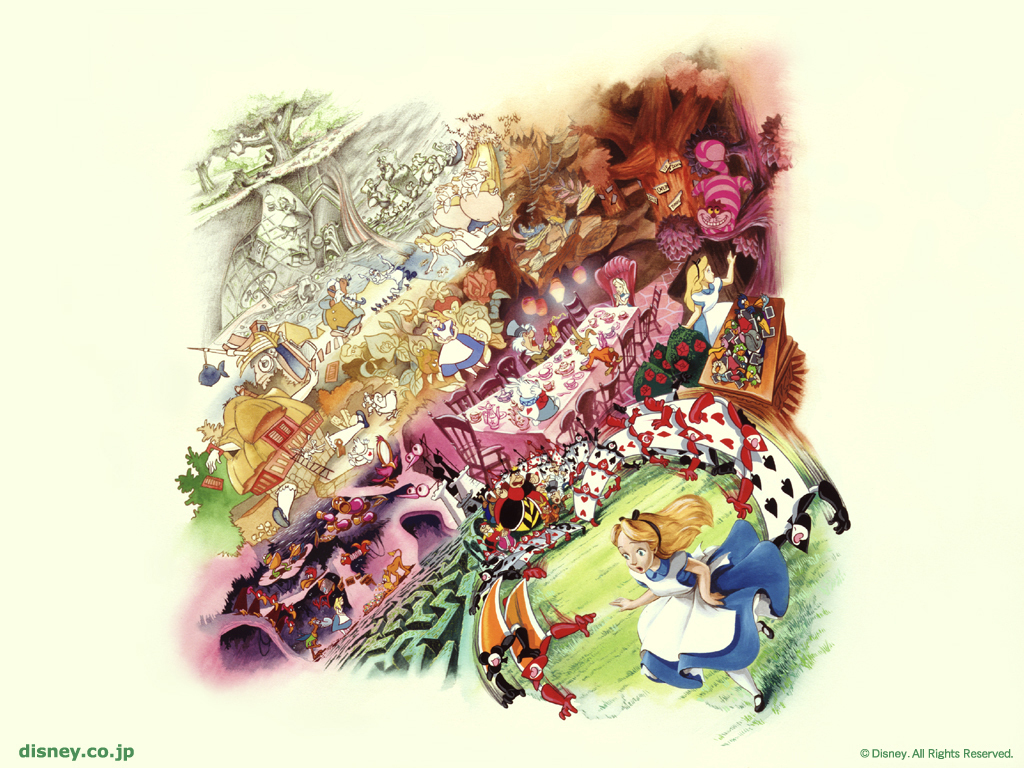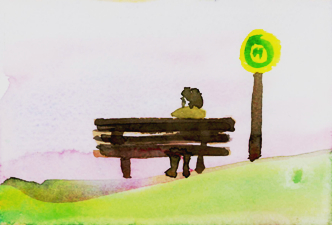By Kimberly Levine
Discussion Preview: Culture-Bound Syndromes with BU Mind and Brain Society
Today, the concept of a ‘culture-bound syndrome’ seems almost mundane. Surely we already know that particular genes and environmental influences can predispose a population to certain diseases. For example, Ashkenazi Jews are at a much higher risk for developing the genetic defect associated with Tay-Sachs disease than other populations, and one is much more likely to contract malaria in tropical and subtropical regions than in, say, Massachusetts. However, these types of disease have biological causes. What is interesting about the phenomena of culture-bound syndromes is that they have no physical mechanism and arise only from the emerging characteristics of one’s culture. More
Neuro_________
Neuroscience has transformed itself into a highly interdisciplinary science rooted in biology that integrates psychology, chemistry, physics, computer science, philosophy, math, engineering, and just about every other type of science that we know of. Botany? Synthesis of new drugs. Oceanography? Animal models. I’m sure there must be some science that neuroscience hasn’t touched, but I can’t think of one.
Since its inception, neuroscience has gotten its grubby little fingers all over the science community. Now, it’s not clear whether the recent flood into even more fields is the result of ambitious forward thinkers or crafty businessmen, but either way, “neuro” as a prefix is popping up everywhere. While some of these up-and-coming fields show promise or, at least, raise interesting questions, others are less convincing…
Neuromarketing: Studies consumers’ sensorimotor, cognitive, and affective response to marketing stimuli
How: fMRI, EEG, eye tracking and GSR (Galvanic Skin Response)
Why: Provides information on what a consumer reacts to. (For example, is it the color, sound, or feel or a product that drew you to it?)
Does it hold water? The neuromarketing firms say so, but there’s minimal peer-reviewed published data to support their claims

Neuroeconomics: Studies decision making under risk and uncertainty, inter-temporal choices (decision that have costs and benefits over time), and social decision making
How: fMRI, PET, EEG, MEG, recordings of ERP and neurotransmitter concentrations, in addition to behavioral data over various design parameters
Why: Some facets of economic behaviors are not completely explained by mainstream economics (expected utility, rational agents) or behavioral economics (heuristics, framing)
Does it hold water? The field has emerged as a respectable one, with centers for neuroeconomic study at many highly regarded universities
Neurolaw: Integrates neuroscientific data with the proceedings of the legal system
How: MRI, fMRI, PET
Why: Supporters believe reliable neuroscientific data can elucidate the truth behind human actions
Does it hold water? TBD. Lie detectors and predictive measures are not yet refined enough to make any real claims. However, the insanity defense (in which a defendant can claim that a neurological illness robbed him or her of the capacity to control his or her behavior) can clear defendants of criminal liability. In addition, the ethics of sentencing and lawmaking with neuroscientific data falls in a grey area.
Neuropolitics: Studies the neurological effects of political messages as well as the characteristics of political people
How: fMRI, GSR
Why: To asses the physical effect of political messages . Also, are liberals and conservatives mechanically different?
Does it hold water? Probably not, but everyone likes a little neuro-babble.
I’m sure this is only the beginning of the neuro______ revolution.
Brain Scans as Mind Readers? Don't Believe the Hype. - Wired.com
The Brain on the Stand - NYTimes.com
Why is every neuropundit such a raging liberal? - Slate.com
Neuroeconomics - Wikipedia
Neuromarketing - Wikipedia
"New York, I love you, but you're bringing me down."
It was very important to me that I go to college in a city. The people! The opportunities! The public transportation! Surely you must develop certain skills navigating through streets full of academics and artists and doctors, all with very cool places to go and things to think, right?
Perhaps not.

Kermit singing his sorrows of living in the city in LCD Soundsystem's "New York, I Love You, But You're Bringing Me Down" music video
Some research suggests that city life is less exciting and stimulating and more... draining us of mental resources. Walking down that busy street dodging people on cell phones, hopping over that crumbling bit of sidewalk, staying aware of the honking, aggressive city drivers, all while trying to spot a restaurant without an hour and a half wait on a Friday night. Your mind is forced to allocate an extreme amount of processing power to execute such controlled navigation. We are simply asking too much of ourselves to maintain awareness of such noxious, disagreeable stimuli and to still function at a normal level.
Marc Berman, psychologist at the University of Michigan, recently published a study measuring cognitive deficits after a short urban walk. Berman sent University of Michigan undergraduates on walks either through an arboretum or downtown Ann Arbor. After the excursion and several psychological tests, those students who walked through the urban environment scored significantly lower on test of attention and working memory. The study goes on to claim that even looking at a photograph of a city leads to significant impairments when compared to the effects of looking at a photograph of nature.
Researchers give a long list of symptoms exacerbated by city life: Reduced attention, reduced ability to handle major life stresses, reduced self-control, reduced memory, reduced emotional control, and increased aggression. At the same time, the research supporting nature's calming, restorative qualities are numerous: hospital patients recover more quickly when there are trees visible from through their windows, women focus better when their apartment overlooks greenery, children with attention deficit disorder show fewer symptoms in nature.
And yet, research from the Santa Fe Institute used a set of complicated algorithms only to find that "the very same urban features that trigger lapses in attention and memory-- the crowded streets, the crushing density of people-- also correlate with measures of innovation as strangers interact with one another in unpredictable ways. It is the 'concentration of social" interactions that is largely responsible for urban creativity, according to the scientists."
Minimize concentration of disagreeable stimuli. Maximize concentration of social interaction. But how?
"It's not an accident that Central Park is in the middle of Manhattan," says Berman. "They needed to put a park there.'" Urban landscape architects look for ways to integrate nature into your urban playgrounds. In fact, the more biodiversity, the better. Richard Fuller at the University of Queensland found that subjects scored higher on psychological well-being tests when parks had a larger variety of trees.
A walk through the park may be more effective than your third Red Bull.
How the city hurts your brain - The Boston Globe
Down the Rabbit Hole: Alex Bellos' Alex in Numberland
I hereby request that you read the following excerpt from Alex Bellos’ Alex’s Adventures in Wonderland. However, I recognize that your choice to do so (or not to) is entirely up to you. You have one-hundred percent control. Either way, here it is:
“The human brain finds it incredibly difficult, if not impossible, to fake randomness. And when we are presented with randomness, we often interpret it as non-randomness. For example, the shuffle feature on an iPod plays songs in a random order. But when Apple launched the feature, customers complained that it favoured certain bands because often tracks from the same band were played one after another. The listeners were guilty of the gambler’s fallacy. If the iPod shuffle were truly random, then each new song choice is independent of the previous choice. As the coin-flipping experiment shows, counterintuitively long streaks are the norm. If songs are chosen randomly, it is very possible, if not entirely likely, that there will be a cluster of songs by the same artist. Apple CEO Steve Jobs was totally serious when he said, in response to the outcry: ‘We’re making [the shuffle] less random to make it feel more random.’ Why is the gambler’s fallacy such strong human urge? It’s all about control. We like to feel in control of our environments. If events occur randomly, we feel we have no control over them. Conversely, if we do have control over events, they are not random. This is why we prefer to see patterns when there are none. We are trying to salvage a feeling of control. The human need to be in control is a deep-rooted survival instinct. In the 1970’s a fascinating (if brutal) experiment examined how important a sense of control was for elderly patients in a nursing home. Some patients were allowed to choose how their rooms were arranged and allowed to choose a plant to look after. The others were told how their rooms would be and had a plant chosen and tended for them. The result after 18 months was striking. The patients who had control over their rooms had a 15 percent death rate, but for those who had no control the rate was 30 percent. Feeling in control can keep us alive.”

Alex in Numberland possibly even more mad than Alice in Wonderland?
Bellos is a British writer and broadcaster who studied mathematics and philosophy as an undergraduate (so his sweeping conclusions might be a little dramatized with pretty flourishes for emphasis, but seem worth mulling over for a couple minutes on a long summer day).
Bellos grazes over several points in these two short paragraphs: Our ability to find patterns where there are none, our comfort with patterns, our constant grasp at control through patterns, and the emotional support that control gives. Many neuroscientists would argue that any control we enjoy is all a mirage; every decision and thought is predetermined despite the turmoil we feel when making a decision. But if that is the case, why does picking the khaki shorts over the denim or “one vente, skinny, extra hot, double shot frappawappacino with whip, please” feel so right? If our decisions have all been made for us - and we are just speaking for the desires of our neurotransmitters -why would the illusion of control give us such comfort? Why would it double the survival rate of elderly patients? If my brain has carefully calculated all of my decisions from now until forever, why did we develop so that control feels so good?
In any case, a gold star to Steve Jobs for making the shuffle option less shuffle-y. Gambler’s fallacy, shmambler’s fallacy - I know my iPod was starting to show a clear preference for Queen.
THIS BLOG POST WILL MAKE YOU RICH.
Casinos everywhere are packed- with gamblers ranging from newly legal young adults to middle aged women out for a ladies’ night to senior citizens with eyes reflecting the lights of the penny slots. Amongst a sea of others. What could they possibly have in common? Dopamine (DA) receptors, of course! A recent study by Tremblay et al investigated the magnitude of effect DA has on reinforcing gambling tendencies.
When playing a slot machine, players’ tendencies lean towards a pattern of instrumental conditioning. In this way, when a trial returns a sizable payoff, participants are more likely to make a risky bet in the succeeding one. However, when haloperidol (a D2 antagonist) was applied, the correlation between payoff and bet declined. Tremblay cites a previous study (Pessiglione et al. 2006) in which haloperidol was associated with a loss of striatal activation in response to reward related versus non-reward-related stimuli. Redish et al. (2007) proposes that persistent betting involves reactivation of a learned expectancy, the reward, a behavior modulated by DA. It is interesting to note though, that participants in Pessiglione’s experiments reported enhanced pleasurable effects of the game under haloperidol, even while their tendency to bet large sums was decreased.
So, how will this information make you money? Well, directly, maybe it won’t. But the next time you make that fateful trip to Atlantic City, keep your dopamine in check.
Tremblay et al- Haloperidol and Slot Machine Gambling
Alzheimer's Therapy: A Bus Stop to Nowhere
Research has yet to definitively establish the cause (or, more likely, causes) of Alzheimer's Disease, an ailment plaguing roughly 5.3 million people in America alone. In its later stages, Alzheimer's does not only disturb patients' lives, but also weighs heavily on caregivers. Whether a family member; friend; or often, retirement home employee; a caregiver will struggle between keeping a loved one or patient mentally in the present or allowing him to sink back into the past.
WNYC, a New York public radio station, hosts a show called RadioLab (also available via free podcast, to which I highly recommend subscribing). In this particular "short" from RadioLab, the hosts speaks with the director of Benrath Senior Center in Düsseldorf, Germany; the home has taken a unique and controversial approach to dealing with residents' dementia. You can listen to the clip here:

The conversation raises many questions: Is it fair to lie to the residents? Even if it removes the anxiety and stress of feeling trapped? Should we allow patients to live in their personal reality which often bears little resemblance to actual reality? Could enabling disorientation enhance patient confusion? Do we judge success by patients' happiness or by their grasp on reality? Is this a realistic method to adopt in other senior care facilities?
Is forgetting, as Lulu Miller says, "both the problem and the solution?"
-Kim LeVine
